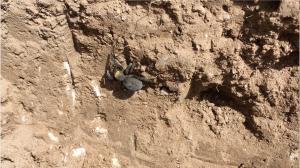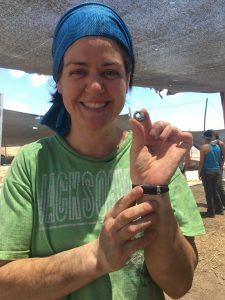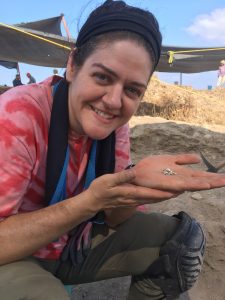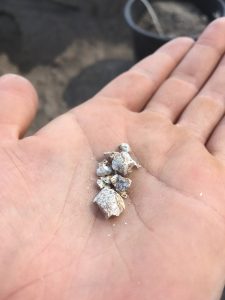One Man’s Trash. . .
“So are you like Indiana Jones?”
This is probably the question people most frequently ask when they discover I’m working on an archaeological dig. In reality, it is not nearly as glamorous—or as dangerous—as a day in the life of Indiana Jones. There are no booby traps, Nazi officers, or pits of snakes. The closest we come to any of that is the (very) infrequent sighting of a scorpion or snake whose habitat we happen to be invading.
So what do we actually do on a dig? Well, we dig. We move lots and lots of dirt. Sometimes it’s a quick process, moving square feet of dirt within minutes by using a pickaxe. Sometimes it requires an eye for detail, taking off millimeters at a time, by gently scraping with the edge of a trowel. And sometimes, excavation happens with the careful strokes of a soft brush. After removing layers of soil, we sift everything, to make sure we didn’t miss any finds as we dug.
What’s the point then, if not to save the world from Biblical plagues?
There are two main purposes that stand out to me. The first is the rare “special find:” items that were not trash, but that still were buried in the soil of time. Finding such an object makes all the sweat, fatigue, and sore muscles worth it. They are reminders that while civilizations may have changed, humanity remains largely the same. This is what could be considered the glamor of archaeology. On the entire dig site, there are anywhere from two to six special finds each day. These could be unbroken pottery jugs, figurines, coins, beads, or other pieces of jewelry.
The second important element is the more mundane, but equally important analysis of the “trash:” things so broken or beyond salvage that the ancients viewed them as worthless, which is saying a lot, considering that they recycled just about everything. The trash could be things like animal bones, pottery shards, or olive pits. These are thoroughly cleaned and examined, and the most indicative pieces are kept. Such items can help with dating the finds from the same level, and can also tell us a lot about how people lived—what kinds of food they ate, whether they had trade with foreign countries, or what kinds of trades were commonly practiced (like blacksmithing or dye production). This can greatly enrich our understanding of the ancient world (and give a unique view into our own time).
And that is how one person’s trash becomes an archaeologist’s treasure.

Perhaps a type of tarantula? Its body was about the size of my thumb.

A metal ring-pendant (a special find!)


A glass bead. It disintegrated almost immediately.

No Comments